
In art, the term ‘negative space’ typically refers to the place where an image isn’t, and to the way the space around that image can produce an image of its own, an image that either enhances or serves as counterpoint to the original. Sometimes this is intentional. Sometimes it is not.
 But there is another kind of negative space, the kind that has nothing to do with art, but a lot to do with stifling the creativity of the artist, the writer, the musician…
But there is another kind of negative space, the kind that has nothing to do with art, but a lot to do with stifling the creativity of the artist, the writer, the musician…
In my house, this latter kind of negative space is represented by a door.
As doors go, this one is outwardly innocuous. It’s a white, four paneled, interior door of the kind found hinged into the thresholds of many a suburban bedroom. This particular door, however, leads to my office, my studio, the room I refer to as the Word Lounge and my husband calls my Abode of Writeyness.
I love my writing haven. I’ve filled it with mermaid art and pop-culture figurines. There are decorative twinkle lights strung along the top of the picture window that looks out onto the street. I have my mother’s faded denim couch in there, and my weight machine, which because its brand logo reads “Marcy,” I refer to as Marcy Playground, after the band.
But in the past four years, I’ve crossed its threshold fewer than ten times.
I’ve told myself, and my friends, that I like to write at the kitchen table, with the door open and the dogs running in and out.
I’ve told myself I’m still recovering from a knee injury.
But if neither of those statements is entirely false, neither are entirely true.
You see, for four years, my studio, my writing lounge, has been enshrouded in a fog of negative space.
It began with an act of generosity. A good friend of ours had gone through a nasty divorce, gotten sick, lost his job, and was essentially squatting in his condo in a midwestern city with the power turned off and winter approaching.
We offered him a room, a fresh start and a plan: take a couple weeks to get healthy, get a job, get a new life.
It was never meant to be four years of him skulking in our house when he wasn’t working his overnight shift for a major delivery service.
And his depression (not officially diagnosed though it runs in his family, admitted as a likelihood, and untreated) was never meant to affect me.
It began as soon as he arrived. Thinking one tiny guest room was too small for one person, I’d moved my studio to our current guest room. It’s smaller, and my weight machine couldn’t be moved with the rest of my stuff. Nor could my couch.
For six months, our friend hung out in that room, tainting it, watching Netflix and claiming he was applying for jobs.
We talked to him. We made him demonstrate his attempts. We coached him.
And I began to resent that he was sitting on the floor in my space. I felt like I couldn’t use my weight machine. “Just send me out,” he said. But his energy had already pervaded the space.
When my parents announced an impending visit, I took the opportunity to reclaim that space for my office, and I also removed the guest furniture from the room he was using. He’d brought a futon on a frame. We moved that into his room.
But his energy continued to be a damper on my creativity. I felt like I couldn’t exist in my own space, because it might keep him, hiding in his room directly across the hall) from sleeping (his mood got blacker when he lacked sleep). I even stopped swimming – something we mermaids should never do – because his room overlooked my back yard.
I don’t think I was – or am – clinically depressed. Instead, I feel like I’ve spent four years in a sort of psycho-spiritual muzzle.
Last weekend, after weeks of will it/won’t it happen, our friend moved out of our house, and into a tiny apartment with a mutual friend, and from the first night he stopped sleeping here, even though he still has belongings to retrieve and a room to clean, I immediately felt lighter.
I’ve written before (elsewhere) about how I often face a creative slump in the first weeks of August, leading up to my birthday on the seventeenth, but this year, despite greeting the month with a nasty sinus infection, my brain is pinging with ideas in ways I haven’t experienced in years.
In art and design, negative space is meant to enhance and expand the central image. A flyer without a lot of whitespace (which, incidentally, does not have to actually be white) is too busy, and people have difficulty parsing the message.
For me, the negative space around my office door, and seeping into the rest of my house, has been more contrast and counterpoint than complement. I’ve reveled in every moment our friend was out, whether it was for work, or to socialize. I suspect some of my sleep issues were a reaction to knowing my house was mine during the overnight hours when he was at work.
I don’t wish anyone to believe it was all bad. There were moments when having a third person in the house was helpful, and even pleasant. Our friend shares my love of kitchen improv and ethnic foods, while I often joke that my husband has the palate of an eight-year-old. There were also many winter weekends that we all spent playing board games that Fuzzy and I couldn’t play with only the two of us.
But those moments were less and less restorative as the time ticked on. As I recently quipped to a friend, it took less time to successfully rehome a difficult-to-place foster pit bull than it has to rehome our friend.
I know I’m not the only one who has had to deal with such situations. Perhaps for others they are less extreme, but we all have ‘energy succubi’ in our lives – people who don’t just live under a personal black cloud, but unwittingly allow their clouds to metastasize into full-blown fog banks, or worse, thunderstorms.
Ultimately, this experience has taught me a lot about boundaries and margins. I’ve learned that while I’m not a true introvert, I do require the freedom to fill my own space as I need and want.
That I can – and do – quite happily share space with my husband says a lot about our relationship. I suspect that in his life, I’m the source of negative space, my creative personality leaving me prone to moodiness from time to time, but it’s not the same. His energy complements mine. My energy connects with his.
Two friends from completely separate circles in my life have suggested that once our friend clears all of his belongings from our house, we have the space smudged with sage, and I’m pretty sure we will be doing so.
In the meantime, the negative space in my house is slowly being filled with positive things. The sense of darkness creeping down the hallway, and preventing me from entering my studio has been pushed back and continues to retreat, to dissipate, to disappear.
Perhaps, in time, I will no longer think of negative space as the cloud of darkness that shrouded our friend’s sojourn in our home.
Perhaps, in time, I will be able to appreciate the counterpoint and the contrast once more.
For now, I’m taking a leaf from Eat, Pray, Love, wishing our friend love and light, and trying to let my resentment go.
About the author: Melissa A. Bartell
 Melissa is a writer, voice actor, podcaster, itinerant musician, voracious reader, and collector of hats and rescue dogs. She is the author of The Bathtub Mermaid: Tales from the Holiday Tub. You can learn more about her on her blog, or connect with her on on Facebook, Instagram, or Twitter.
Melissa is a writer, voice actor, podcaster, itinerant musician, voracious reader, and collector of hats and rescue dogs. She is the author of The Bathtub Mermaid: Tales from the Holiday Tub. You can learn more about her on her blog, or connect with her on on Facebook, Instagram, or Twitter.

 Diana Raab, PhD, is an award-winning author, poet, blogger and speaker and author of eight books. She speaks on writing for healing and transformation. Her book, Writing for Bliss: A Seven-Step Plan for Telling Your Story and Transforming Your Life, is due out in September 2017 by Loving Healing Press and is currently available for pre-order on Amazon. More at dianaraab.com.
Diana Raab, PhD, is an award-winning author, poet, blogger and speaker and author of eight books. She speaks on writing for healing and transformation. Her book, Writing for Bliss: A Seven-Step Plan for Telling Your Story and Transforming Your Life, is due out in September 2017 by Loving Healing Press and is currently available for pre-order on Amazon. More at dianaraab.com.




 before visiting the artwork.
before visiting the artwork. material. I spent a few minutes reviewing Netflix to find suitable movie options.
material. I spent a few minutes reviewing Netflix to find suitable movie options. bath and perhaps indulge in a glass of Chardonnay. Next, I would give myself a facial using the clay mask, and then end the session with a mani/pedi.
bath and perhaps indulge in a glass of Chardonnay. Next, I would give myself a facial using the clay mask, and then end the session with a mani/pedi. Molly Totoro is a Connecticut Yankee currently residing in the Midwest with her husband and trusty basset. While Molly retired from full-time teaching in 2014 to pursue her writing dreams, she continues to work with students to achieve their writing potential. Molly recently published her first book,
Molly Totoro is a Connecticut Yankee currently residing in the Midwest with her husband and trusty basset. While Molly retired from full-time teaching in 2014 to pursue her writing dreams, she continues to work with students to achieve their writing potential. Molly recently published her first book, 
 infused waters, fresh berries, and concoctions made with heirloom tomatoes picked from the vine.
infused waters, fresh berries, and concoctions made with heirloom tomatoes picked from the vine. essential that I practice restoration daily. I’m not suggesting this is easy, but with the amount of information I am exposed to and the pace at which my life moves (which is the same for most everyone I know), a week away on vacation just isn’t enough and so restorative time has become just as pertinent, if not more pertinent, as eating well and moving our bodies—our beacons of hope for health and well-being.
essential that I practice restoration daily. I’m not suggesting this is easy, but with the amount of information I am exposed to and the pace at which my life moves (which is the same for most everyone I know), a week away on vacation just isn’t enough and so restorative time has become just as pertinent, if not more pertinent, as eating well and moving our bodies—our beacons of hope for health and well-being. Anna Oginsky is the founder of Heart Connected, LLC, a small Michigan-based workshop and retreat business that creates opportunities for guests to tune in to their hearts and connect with the truth, wisdom, and power held there. Her work is inspired by connections made between spirituality, creativity, and community. Anna’s first book, My New Friend, Grief, came as a result of years of learning to tune in to her own heart after the sudden loss of her father. In addition to writing, Anna uses healing tools like yoga, meditation, and making art in her offerings and in her own personal practice. She lives in Brighton, Michigan with her husband, their three children, and Johnny, the big yellow dog. Connect with her on her
Anna Oginsky is the founder of Heart Connected, LLC, a small Michigan-based workshop and retreat business that creates opportunities for guests to tune in to their hearts and connect with the truth, wisdom, and power held there. Her work is inspired by connections made between spirituality, creativity, and community. Anna’s first book, My New Friend, Grief, came as a result of years of learning to tune in to her own heart after the sudden loss of her father. In addition to writing, Anna uses healing tools like yoga, meditation, and making art in her offerings and in her own personal practice. She lives in Brighton, Michigan with her husband, their three children, and Johnny, the big yellow dog. Connect with her on her 



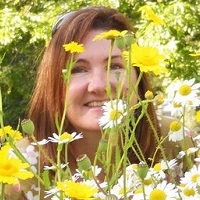 Jeanette McGurk is a Graphic Designer who entered the world of writing through advertising. She discovered writing a lot of truth with a little fluff is a lot more fun than the other way round. Now that she is no longer spending time making air conditioners, tile floors, IT and Botox sound sexy, she writes about the unglamorous yet wonderful moments of life for people like herself; in other words, anyone looking for interesting ways to put off cleaning and doing laundry.
Jeanette McGurk is a Graphic Designer who entered the world of writing through advertising. She discovered writing a lot of truth with a little fluff is a lot more fun than the other way round. Now that she is no longer spending time making air conditioners, tile floors, IT and Botox sound sexy, she writes about the unglamorous yet wonderful moments of life for people like herself; in other words, anyone looking for interesting ways to put off cleaning and doing laundry.


 Hi, I’m Briana! I am a
Hi, I’m Briana! I am a 



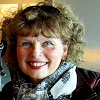 After a long career in public broadcasting, Jeanie Croope is now doing all the things she loves — art, photography, writing, cooking, reading wonderful books and discovering a multitude of new creative passions. You can find her blogging about life and all the things she loves at
After a long career in public broadcasting, Jeanie Croope is now doing all the things she loves — art, photography, writing, cooking, reading wonderful books and discovering a multitude of new creative passions. You can find her blogging about life and all the things she loves at 



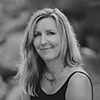 Christine Mason Miller is an author and artist who has been inspiring others to create a meaningful life since 1995. Transplant: A Podcast about Home, inspired by her recent move to the midwest, can be found at
Christine Mason Miller is an author and artist who has been inspiring others to create a meaningful life since 1995. Transplant: A Podcast about Home, inspired by her recent move to the midwest, can be found at 
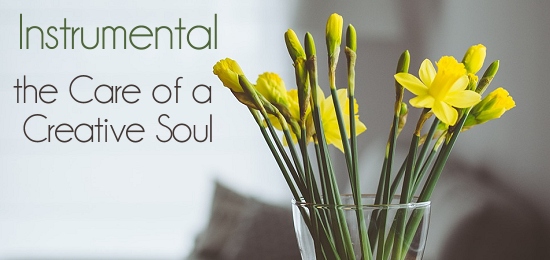

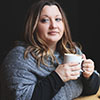 Bella Cirovic is a photographer and writer who lives with her husband and daughter in the suburbs outside of NYC. She writes on the subjects of self care, body love and nourishment, crystals, essential oils, and family life. Catch up with Bella at her blog:
Bella Cirovic is a photographer and writer who lives with her husband and daughter in the suburbs outside of NYC. She writes on the subjects of self care, body love and nourishment, crystals, essential oils, and family life. Catch up with Bella at her blog: 

 Richard King Perkins II is a state-sponsored advocate for residents in long-term care facilities. He lives in Crystal Lake, IL, USA with his wife, Vickie and daughter, Sage. He is a three-time Pushcart, Best of the Net and Best of the Web nominee whose work has appeared in more than a thousand publications.
Richard King Perkins II is a state-sponsored advocate for residents in long-term care facilities. He lives in Crystal Lake, IL, USA with his wife, Vickie and daughter, Sage. He is a three-time Pushcart, Best of the Net and Best of the Web nominee whose work has appeared in more than a thousand publications.

 But there is another kind of negative space, the kind that has nothing to do with art, but a lot to do with stifling the creativity of the artist, the writer, the musician…
But there is another kind of negative space, the kind that has nothing to do with art, but a lot to do with stifling the creativity of the artist, the writer, the musician…